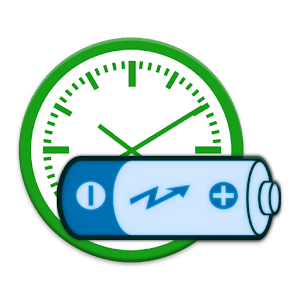In my past blogs, I have discussed about the advantages of electric vehicles (EVs) to the grid and their owners. Not only that, electric vehicles reduces petroleum imports and also improve the air quality (in most cases) by emitting lesser Greenhouse gas emissions than their conventional counterparts. However, despite these advantages, sales of these cars have remained rather low. In this blog, I detail some of the factors that are behind the low adoption of electric cars.
 1. Lack of awareness about new technology: Electric cars and their usage are fairly new to most people. As with any new technology, this lack of knowledge presents a barrier to the purchase of EVs. In most localities, people hardly know of anyone who owns an EV and as such, do not have a easy source of information about the performance or maintenance of EVs compared to the vehicles they already know. Apart from the "network effect" other factors also contribute to the anxiousness of people to owning a EV. Being a relatively new technology, many dealers do not have sufficient technical personnel who can guide customers about EVs. Consumers also have fewer options in EVs to choose from. Furthermore, the dearth of shops/garages that can repair or provide maintenance support to EVs creates additional reluctance in the minds of potential buyers.
1. Lack of awareness about new technology: Electric cars and their usage are fairly new to most people. As with any new technology, this lack of knowledge presents a barrier to the purchase of EVs. In most localities, people hardly know of anyone who owns an EV and as such, do not have a easy source of information about the performance or maintenance of EVs compared to the vehicles they already know. Apart from the "network effect" other factors also contribute to the anxiousness of people to owning a EV. Being a relatively new technology, many dealers do not have sufficient technical personnel who can guide customers about EVs. Consumers also have fewer options in EVs to choose from. Furthermore, the dearth of shops/garages that can repair or provide maintenance support to EVs creates additional reluctance in the minds of potential buyers.
 2. High Costs: The high costs of EVs present a major barrier to their adoption. The starting prices of EVs lie in the range of $25,000- $35000, which are much higher than that of conventional fuel vehicles. While the federal and state governments do offer tax subsidies up to $2500-$7500, the prices of EVs still remain significantly high. Moreover, these subsidies are not offered upfront during the time of purchase and as such, reduce the affordability of EVs to common people. This has limited the ownership of EVs to a few affluent people who may want to be seen as proponents of new and green technology.Furthermore, studies have proven that people tend to largely underestimate the fuel savings from an EV. As such, there persists a notion that the price of an EV cannot be recovered from the fuel savings during its lifetime. Put differently, people view the payback period of an EV to be much longer than the time span that they will own the vehicle for.
2. High Costs: The high costs of EVs present a major barrier to their adoption. The starting prices of EVs lie in the range of $25,000- $35000, which are much higher than that of conventional fuel vehicles. While the federal and state governments do offer tax subsidies up to $2500-$7500, the prices of EVs still remain significantly high. Moreover, these subsidies are not offered upfront during the time of purchase and as such, reduce the affordability of EVs to common people. This has limited the ownership of EVs to a few affluent people who may want to be seen as proponents of new and green technology.Furthermore, studies have proven that people tend to largely underestimate the fuel savings from an EV. As such, there persists a notion that the price of an EV cannot be recovered from the fuel savings during its lifetime. Put differently, people view the payback period of an EV to be much longer than the time span that they will own the vehicle for.
 3. Short Range : Most EVs have a range (the distance a car can travel per fueling) of about 35-40 miles which is considerably lesser than conventional vehicles.Thus, the perception that the short range may leave the EV owners stranded instills a reluctance in the minds of people against the purchase of BEVs.While data has indicated that the average range of an EV suffices to fulfill most of the daily trips (which account for nearly 85 % of the annual travel of an average vehicle owner), the loss of freedom of making long distance journeys, even after a paying a fortune to purchase an EV makes potential buyers uncomfortable.
3. Short Range : Most EVs have a range (the distance a car can travel per fueling) of about 35-40 miles which is considerably lesser than conventional vehicles.Thus, the perception that the short range may leave the EV owners stranded instills a reluctance in the minds of people against the purchase of BEVs.While data has indicated that the average range of an EV suffices to fulfill most of the daily trips (which account for nearly 85 % of the annual travel of an average vehicle owner), the loss of freedom of making long distance journeys, even after a paying a fortune to purchase an EV makes potential buyers uncomfortable.

Which of these factors matters the most to you ? Leave your opinion in the poll at the end of the blog.
 1. Lack of awareness about new technology: Electric cars and their usage are fairly new to most people. As with any new technology, this lack of knowledge presents a barrier to the purchase of EVs. In most localities, people hardly know of anyone who owns an EV and as such, do not have a easy source of information about the performance or maintenance of EVs compared to the vehicles they already know. Apart from the "network effect" other factors also contribute to the anxiousness of people to owning a EV. Being a relatively new technology, many dealers do not have sufficient technical personnel who can guide customers about EVs. Consumers also have fewer options in EVs to choose from. Furthermore, the dearth of shops/garages that can repair or provide maintenance support to EVs creates additional reluctance in the minds of potential buyers.
1. Lack of awareness about new technology: Electric cars and their usage are fairly new to most people. As with any new technology, this lack of knowledge presents a barrier to the purchase of EVs. In most localities, people hardly know of anyone who owns an EV and as such, do not have a easy source of information about the performance or maintenance of EVs compared to the vehicles they already know. Apart from the "network effect" other factors also contribute to the anxiousness of people to owning a EV. Being a relatively new technology, many dealers do not have sufficient technical personnel who can guide customers about EVs. Consumers also have fewer options in EVs to choose from. Furthermore, the dearth of shops/garages that can repair or provide maintenance support to EVs creates additional reluctance in the minds of potential buyers.
4. Barriers due to fueling infrastructure: There are two barriers that arise from fueling infrastructure:
- The charging infrastructure for EVs is not as extensive as gasoline vehicles currently. The infrastructure and the sales of EVs present a classic chicken and egg problem - people are unwilling to buy EVs due to lack of charging infrastructure-manufacturers are unwilling to invest in infrastructure due to the low EV sales.Combined with the short range, this lack of infrastructure makes presents a strong impediment to the usage of EVs.
- The charging of EVs by Level 1 chargers takes around 6-8 hours with slow chargers and this charging time is much slower than that of a gasoline/petrol fueled vehicle (around 10-15 minutes). While slow charging can be easily accomplished at home during the night hours,a vehicle owner may not be willing to spend that amount of time at public charging places where there is hardly any alternate activity to engage in. Level 2 do considerably speed up the charging process, however, the require around $2000-$5000 of additional investment to be installed. DC fast chargers can recharge the EVs in a very short time of about 30 minutes, but the super-fast charging may damage the battery or reduce the length of its life in some cases. Moreover, the cost of DC fast chargers are extremely high to be installed by EV owners. As such, they can only be installed by large corporations or private entities at public places.
EVs present a way to a sustainable future. As such, EV adoption is going to rise, sooner or later. But it remains to be seen when and how.
cost in life cycle is really low for 100% electrics.
ReplyDeleterange is know and vehicles have very accurate guess-o-meters.
batteries are getting better, costing less and lasting longer each year.
Any outlet can be a charge port.
-The biggest problems are the subsidies to OIL. Studies show the REAL cost is $10-15 a gallon. Just look at Europe to see $8-10 today with no subsidies.
-There is no Carbon tax for the pollution.
This comment has been removed by the author.
Deletethese are solutions that may appear in near future or future. As such, the problems appear to be a barrier currently. However, I do recognize the hurdle that low oil prices present to the adoption of electric vehicles. But these subsidies cannot last forever as oil is limited in supply and the prices are bound to rise, sooner or later.
DeleteCarbon tax is a complicated issue. There is no certainty that electric cars do not cause emissions because production and transmission of electricity also produce emissions.As such, it is difficult to apportion carbon tax to individuals.
by the way V2G is here and growing
ReplyDeletewww.V2G-101.webs.com
I know v2g has long been proposed in the literature, but these have been limited to demonstration, but no where has the V2G structure been widely adopted. There is a need for the pilot projects to move from demonstration stage to implementation stage
Delete